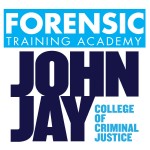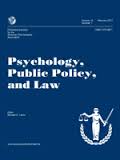
Most evaluators express concern over cognitive bias but hold an incorrect view that mere willpower can reduce bias. This is the bottom line of a recently published article in Psychology, Public Policy and Law. Below is a summary of the research and findings as well as a translation of this research into practice.

Featured Article | Psychology, Public Policy and Law | 2018, Vol. 24, No. 1, 1-10
Cognitive Bias in Forensic Mental Health Assessment: Evaluator Beliefs About Its Nature and Scope
Author
Patricia A. Zapf, John Jay College of Criminal Justice
Jeff Kukuck, Towson University
Saul M. Kassin, John Jay College of Criminal Justice
Itiel E. Dror, University College London
Abstract
Decision-making of mental health professionals is influenced by irrelevant information (e.g., Murrie, Boccaccini, Guarnera, & Rufino, 2013). However, the extent to which mental health evaluators acknowledge the existence of bias, recognize it, and understand the need to guard against it, is unknown. To formally assess beliefs about the scope and nature of cognitive bias, we surveyed 1,099 mental health professionals who conduct forensic evaluations for the courts or other tribunals (and compared these results with a companion survey of 403 forensic examiners, reported in Kukucka, Kassin, Zapf, & Dror, 2017). Most evaluators expressed concern over cognitive bias but held an incorrect view that mere willpower can reduce bias. Evidence was also found for a bias blind spot (Pronin, Lin, & Ross, 2002), with more evaluators acknowledging bias in their peers’ judgments than in their own. Evaluators who had received training about bias were more likely to acknowledge cognitive bias as a cause for concern, whereas evaluators with more experience were less likely to acknowledge cognitive bias as a cause for concern in forensic evaluation as well as in their own judgments. Training efforts should highlight the bias blind spot and the fallibility of introspection or conscious effort as a means of reducing bias. In addition, policies and procedural guidance should be developed in regard to best cognitive practices in forensic evaluations.
Keywords
competence, plea bargaining, criminal adjudication, fuzzy-trace theory, decision making
Summary of the Research
“The present study was designed to assess the opinions of an international sample of forensic evaluators on a range of bias related issues, including the extent to which evaluators are aware of biases in their own work and the degree to which they believe bias impacts the work of their peers. This survey reveals the attitudes and beliefs about bias among forensic mental health evaluators and provides the necessary, foundational information that will assist in determining whether and what policies might be needed to tackle the issue of cognitive bias. The results of a companion survey of 403 forensic examiners are reported elsewhere: here we present the survey of forensic evaluators and then compare these results to those obtained from forensic science examiners in the discussion” (p. 2-3).
“This study extends that of Neal and Brodsky (2016) by surveying a large international sample of forensic evaluators to determine the extent to which bias in forensic evaluation is acknowledged in one’s own evaluations as well as the evaluations of one’s peers. In addition, we were interested in whether experience or training on cognitive biases were related to evaluators’ opinions regarding the impact of bias in forensic evaluation” (p. 3).
“Consistent with recent research demonstrating that forensic evaluators are influenced by irrelevant contextual information, many evaluators acknowledge the impact of cognitive bias on the forensic sciences in general (86%), forensic evaluation specifically (79%), and in their own forensic evaluations (52%). In terms of the pattern of responses, most evaluators recognized bias as a general cause for concern, but far fewer saw themselves as vulnerable. This pattern is consistent with research on the bias blind spot—the inherent tendency to recognize biases in others while denying the existence of those same biases in oneself. For forensic evaluators, the presence of a bias blind spot might impact the perceived necessity of taking measures to minimize bias in forensic evaluation or the selection of measures to use for this purpose” (p. 7).
“Many evaluators showed a limited understanding of how to effectively mitigate bias. Overall, 87% believed that evaluators who consciously try to set aside their preexisting beliefs and expectations are less affected by them. This appears to suggest that many evaluators see bias as an ethical problem that can be overcome by mere willpower. Decades of research overwhelmingly suggest that cognitive bias operates automatically and without, and cannot be eliminated through willpower alone. Training efforts to educate evaluators about cognitive bias should underscore the fact that bias is innate and universal, and thus can affect even well intentioned and competent forensic evaluators” (p. 7).
“One general strategy that has been used in both forensic science and forensic evaluation is training on bias to increase understanding and awareness of its potential impact. While we cannot conclude that bias training produced the observed differences between bias-trained and—untrained evaluators in terms of attitudes and beliefs about bias, our data demonstrate that evaluators with training in bias hold attitudes and beliefs suggestive of an increased awareness and understanding of the potential impact of bias. While it is encouraging that bias-trained evaluators held more enlightened beliefs, it remains to be seen whether mere knowledge translates into improved performance” (p. 7).
“Our data also revealed that more experienced evaluators were less likely to acknowledge cognitive bias as a cause for concern both in forensic evaluation and with respect to their own judgments. Without more information it is difficult to know whether this reflects a generational perspective (e.g., those who have been active in the profession longer hold outdated beliefs) or whether experience is related to reduced vulnerability to bias, or whether some other factor(s) is/are at play. Our data do not indicate a relation between bias training and years of experience so these findings are not a result of more experienced evaluators having lower rates of bias training. Interestingly, some literature on ethical transgressions appears to indicate that these typically occur when clinicians are more than a decade postlicensure, as opposed to newly licensed, so it is possible that this reduced capacity to see one’s self as vulnerable to bias may be related to a more general trend to be somewhat less careful midcareer. More research is necessary to tease apart generational and training variables from experience and other potential factors that could account for this perceived reduction in vulnerability to bias on the part of more experienced evaluators” (p. 7).
Translating Research into Practice
“Cognitive bias is an issue relevant to all domains of forensic science, including forensic evaluation. Our results reveal that cognitive bias appears to be a cause for concern in forensic evaluation. Training models emphasize the necessity and importance of context, and evaluators are trained to consider the impact of many different aspects of context on the particular issue being evaluated. This reliance on context in forensic evaluation might result in forensic evaluators being more willing to acknowledge the potential biasing impact of context, but at the same time, being also more susceptible to bias. What appears clear is that not all evaluators are receiving training on biases that can result from human factors or contextual factors in forensic evaluation. In this sample, only 41% had received training on bias in forensic evaluation, suggesting the need for a systematic means of ensuring that all forensic evaluators receive training on this issue. Implementing policy or procedure at the state licensing level or in other credentialing or certification processes is one means of ensuring that all forensic evaluators receive training on this important issue. As Guarnera, Murrie, and Boccaccini (2017) recommended, ‘states without standards for the training and certification of forensic experts should adopt them, and states with weak standards (e.g., mere workshop attendance) should strengthen them’ (p. 149)” (p. 9).
“Evidence for a bias blind spot in forensic evaluators was found. Future research is needed to investigate ways in which this bias blind spot might be reduced or minimized. Neal and Brodsky’s (2016) survey of forensic psychologists revealed that all evaluators endorsed introspection as an effective means of reducing bias, despite research evidence to the contrary. Pronin and Kugler (2007) found that educating individuals about the fallibility of introspection resulted in a reduced reliance on introspection as a means of minimizing bias. Training on bias should explicitly address the bias blind spot and the fallibility of introspection as a bias-reducing strategy” (p .9).
Other Interesting Tidbits for Researchers and Clinicians
“More research on specific mechanisms to reduce or minimize the effects of cognitive bias in forensic evaluation is required. Techniques such as exposure control, emphasized in the forensic sciences, may be feasible for some aspects of forensic evaluation but not others; however, more research is needed to determine the specific conditions under which these strategies can be effective in forensic evaluation. The use of checklists, alternate hypothesis testing, considering the opposite, and other strategies have been proposed for use in forensic evaluation to reduce the impact of bias, but more research is needed to determine the specific conditions under which these strategies can be most effective. Cross-domain research, drawing on bias reduction strategies used in the forensic and clinical/medical sciences and their application to forensic evaluation, is necessary to develop the ways in which bias in forensic evaluation can be reduced. As Lockhart and Satya-Murti (2017) recently concluded, ‘it is time to shift focus to the study of errors within specific domains, and how best to communicate uncertainty in order to improve decision-making on the part of both the expert and the trier-of-fact’ (p. 1)” (p. 9).
“What is clear is that forensic evaluators appear to be aware of the issue of bias in general, but diminishing rates of perceived susceptibility to bias in one’s own judgments and the perception of higher rates of bias in the judgments of others as compared with oneself, underscore that we may not be the most objective evaluators of our own decisions. As with the forensic sciences, implementing procedures and strategies to minimize the impact of bias in forensic evaluation can serve to proactively mitigate against the intrusion of irrelevant information in forensic decision making.
This is especially important given the courts’ heavy reliance on evaluators’ opinions, the fact that judges and juries have little choice but to trust the expert’s self-assessment of bias, and the potential for biased opinions and conclusions to cross-contaminate other evidence or testimony. More research is necessary to determine the specific strategies to be used and the various recommended means of implementing those strategies across forensic evaluations, but the time appears to be ripe for further discussion and development of policies and guidelines to acknowledge and attempt to reduce the potential impact of bias in forensic evaluation” (p. 9).
“A few limitations of this research are worth noting. We utilized a survey methodology that relied on self-report so we were unable to ascertain the validity of the responses or obtain more detailed information to elucidate the reasoning behind respondents’ answers to the questions. Related to this, we were unable to ensure that all respondents would interpret the questions in the same way. For example, one reviewer pointed out that with respect to question four about the nature of bias (i.e., An evaluator who makes a conscious effort to set aside his or her prior beliefs and expectations is less likely to be influenced by them), respondents could indicate this to be true but still not believe that this conscious effort would eliminate bias, only that it would result in a reduction of the potential influence. Another pointed out that ambiguity regarding the word “irrelevant” and what that might mean in relation to a particular case could have led to different interpretations by various respondents. In addition, our methodology did not allow us to examine casual influences or anything more than mere associations between variables such as training or experience and beliefs about bias” (p. 8).
Join the Discussion
As always, please join the discussion below if you have thoughts or comments to add! To read the full article, click here.















